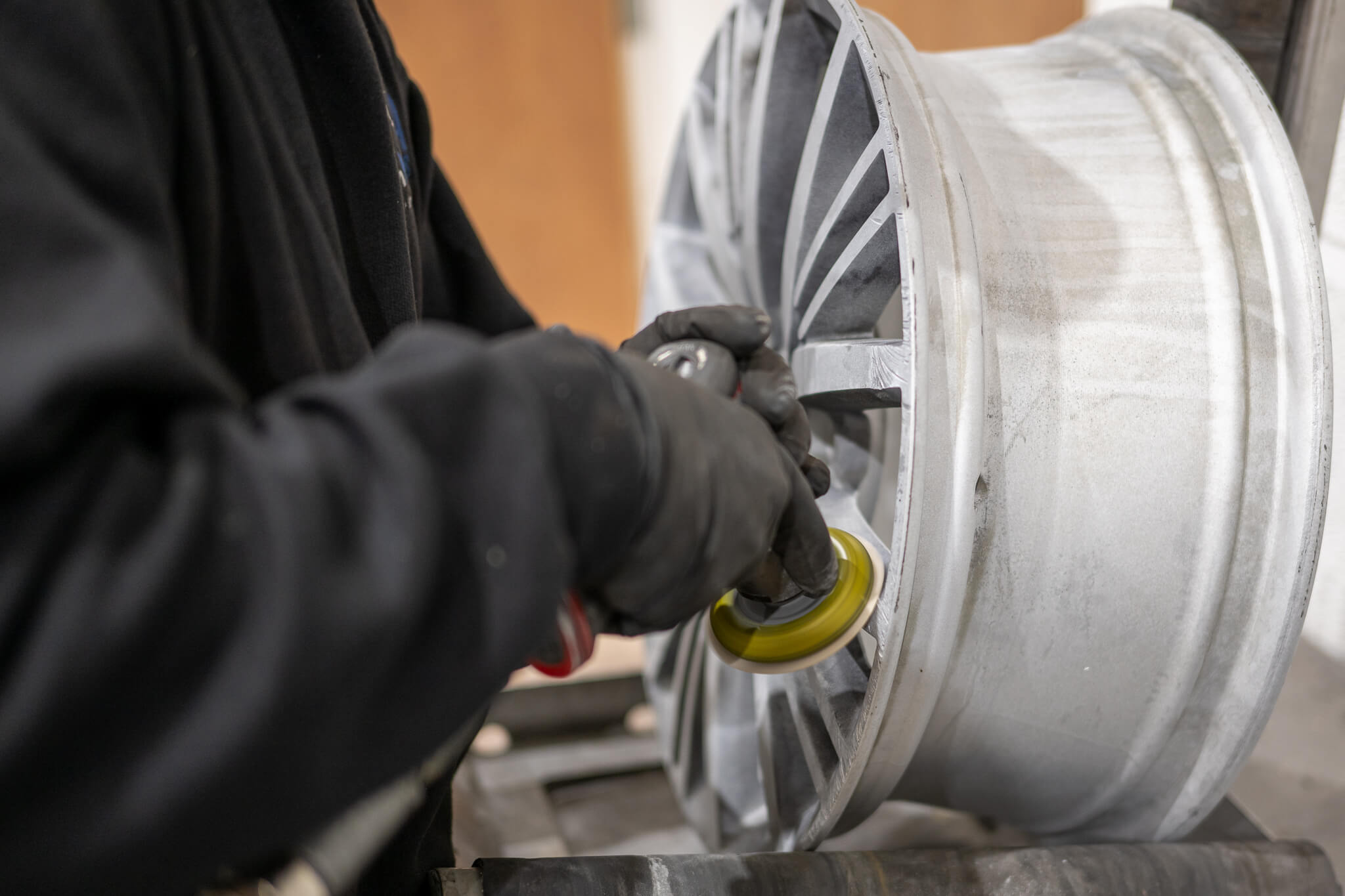Painted alloy wheels and diamond cut alloy wheels are both good options to finish off the aesthetic of your car. But there are a few differences between these two alloy finish types which are important to consider when looking for repairs or deciding what to get.
There are things to consider such as appearance, maintenance, durability and repairs which might influence your decision if you’re choosing between the two wheel types. In this blog post, we’ll break down both wheel types, and some of the key differences between them. We’ll also provide some repair options for those who have damaged alloys.
Enter your text here...
What are diamond cut alloy wheels?
Diamond cut alloy wheels are probably the most premium form of alloy wheels, which are achieved using a specific diamond-tipped cutting lathe. This lathe cuts or shaves a tiny layer of the surface of the alloy wheel off, resulting in a DVD or CD like finish, usually associated with premium brands such as Mercedes or BMW.
The reason diamond cut alloys are regarded so highly is because of their shiny appearance which can only be achieved using this method. Using diamond as a cutting tool allows for a completely unique level of accuracy, giving the best finish possible.
Diamond cut alloys are usually finished with a protective lacquer layer, to prevent damage and ensure that they last long term.

What are painted alloy wheels
Painted alloy wheels are those which achieve their aesthetic through painting techniques such as powder coating or spray painting, as opposed to through diamond cutting. Whilst not necessarily as highly regarded as diamond cut alloys, powder coated wheels are a more common type which can still complete a high quality look for your car, especially when done professionally.
We paint alloy wheels using specialist paint which actually increases the lifespan of your wheels by deflecting road debris and brake dust.
Painted alloy wheels do have some benefits over diamond cut wheels, including that they are slightly less susceptible to damage, due to the thin layer of alloy removed each time diamond alloys are cut. We think it’s important to understand the good and bad associated with both types, so you’re always best informed to make a good decision.
Positives and negatives of diamond cut alloys
Take a look at some of the positives and negatives of diamond cut alloys to determine whether diamond cutting is the right repair option for you.
Positives
Negatives
Positives and negatives of painted alloys
Now that we’ve looked at the pros and cons of diamond alloys, let’s do the same for painted alloys:
Positives
Negatives
Mobile repair for diamond cut alloy wheels
At Alloy Wheel Repair Services, we offer a mobile diamond cut wheel repair service, which takes all the quality and tools involved with workshop-based repairs, and condenses them into a specialist repair van. This way, we offer professional repairs, no matter where you are, with maximum convenience for you.
Book an Alloy Wheel Repair Today
